#Kunstakademie-Düsseldorfer
Text
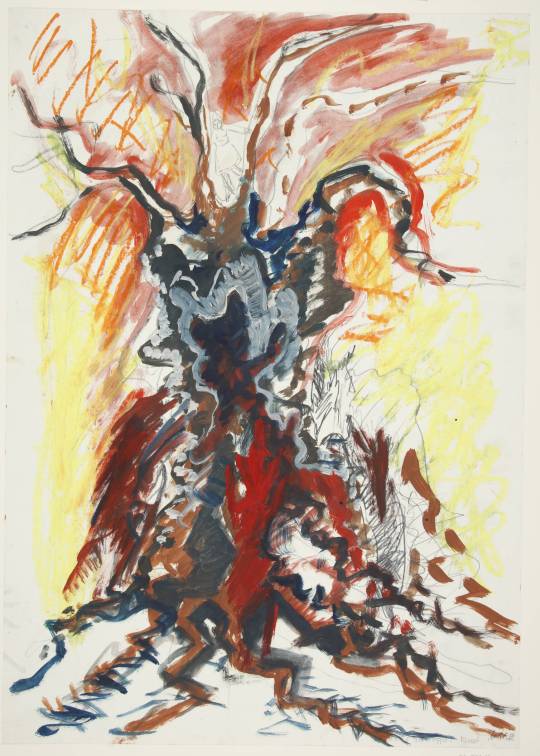
Ursula Reuter Christiansen (80 today) is a German-born Danish artist who has lived here since 1969. Prior to that she studied at the Academy in Düsseldorf with Joseph Beuys. She connected with Eks-skolen in Denmark and later became Professor at the Royal Academy in Copenhagen.
Reuter Christiansen's art is Expressionist and she often works with myths and fairy tales.
Above: Den lille Rødhætte og ulven, 1982 - Oil, crayon (and possibly water color) over pencil (SMK)
#art#danish artist#german-born artist#ursula reuter christiansen#danish royal academy of fine arts#kunstakademie düsseldorf#joseph beuys#1980s#crayon#oil on paper#pencil drawing#expressionism#eks-skolen#smk#smkmuseum#statens museum for kunst#little red riding hood#fairy tales#mythographic art
8 notes
·
View notes
Text
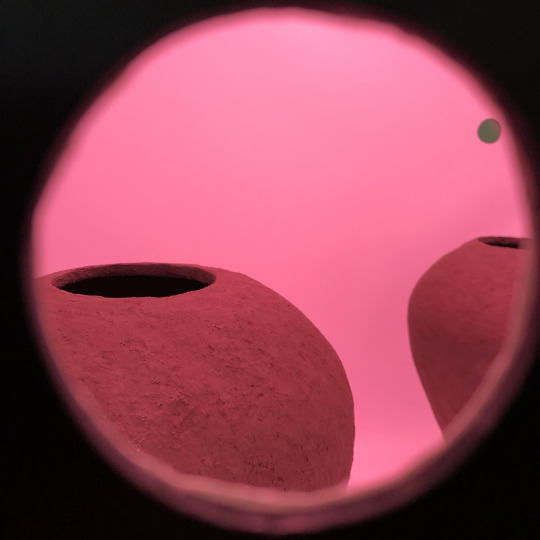
220219
·
#photographers on tumblr#original photographers#concept photography#kunstakademie düsseldorf#art#installation#rundgang#interfoto#josch schlegel
6 notes
·
View notes
Text

#robertfreund#düsseldorf#photography#deutsche foto institut#nrw-forum#ehrenhof#andreas gursky#fotografie#fotografieren#kultur#art#kunstakademie#kunstakademie düsseldorf#fotomuseum#fotoausstellung#fotografie-freund#bekannte fotografie#bekannt
2 notes
·
View notes
Text
Marta Klonowska: Vom Eigenleben der Kreaturen: Hamburg vom 25.02. bis 04.05.2024
Die polnische Künstlerin Marta Klonowska fertigt faszinierende Tierskulpturen aus zerbrochenem, farbigem Glas. Ihre tierischen Werke können vom 25. Februar bis 04. Mai 2024 im Glasmuseum der Achilles-Stiftung an der Fuhlsbüttler Straße 415a in Hamburg bewundert werden.
Den Reiz an zerbrochenem Glas entdeckte Marta Klonowska per Zufall. Es war eine kaputte Glasflasche, die sie während ihrer Zeit…

View On WordPress
#Achilles Stiftung#angewandte Kunst#Design#Glas#Glasscherben#Hamburg#Handwerkskunst#Inspiration#Kunst#Kunstakademie Düsseldorf#Kunsthandwerk#Marta Klonowska#tierfiguren#Tierskulpturen
0 notes
Text
Private Umbrüche…

.
Kottan war in den letzten Tage nicht ganz bei der Sache, denn W.'s Tage in Leipzig waren gezählt. Das Vordiplom in der Tasche, stand ein Umzug an, in dessen Zuge sich Kreise schließen würden: W. wechselt an die Hochschule, die sich in Rufweite der Düsseldorfer Altstadt und Kunsthalle befindet – der die Kollegen erst kürzlich einen Besuch abgestattet hatten!
Vor ein paar Wochen noch hatten Schrammel und Schremser Kottan mit ihrem Wochenend-Trip in die deutsche Stadt am Rhein so verrückt gemacht, dass er überlegt hatte, sich der kleinen Reisegruppe anzuschließen. Letztlich ging es sich nicht aus wegen dieser verdammten Horrak-Geschichte…
Wenigstens haben der Herr Major und Ilse das vergangene Wochenende in Leipzig genossen und W. samt Spar-Hausstand am Sonntag mit in die alte Heimat genommen. Während W. erleichtert schien, erstmal in heimatliche Gefilde zurückkehren zu können, kamen in Kottan seltsame Gefühle auf: Die sächsische Metropole war ihm in den letzten zwei Jahren fast unbemerkt ans Herz gewachsen, vor allem die dortige Fahrradkultur ist ihm sehr sympathisch – so gut wie keine dicken Männer mit Reichweitenangst auf deswegen genauso dicken SUV-Pedelecs, kaum Helme und die Damen fast durchweg mit "Herrenrahmen" (sagt man alles heute nicht mehr – es gibt hohen und tiefen Einstieg bzw. 'Wave'-Rahmen!). Und alle in sehr engagiertem Tempo. Ein schönes Gewusel hats dort in dieser Stadt!
Am Freitag Abend haben sich die beiden Besucher aus Wien in der Hochschule die Ausstellung der (Vor-)Diplomanten angesehen und ein paar Biere mit den Künstlern gezischt, das war ein sehr schöner Abend an einem Ort der staatlich unterstützten Freiheit. In Sachsen! A Waunsinn! Kottan und Ilse sponnen leicht angeflutet ganz motivierende Zukunftsvisionen durch, aber das ist eine andere G'schicht…
.
#dezernat-4#inside kottan#kottan privat#leipzig#hgb#düsseldorf#kunstakademie düsseldorf#deutschsprachiger text#deutscher text#fiktion#hgb leipzig
1 note
·
View note
Text

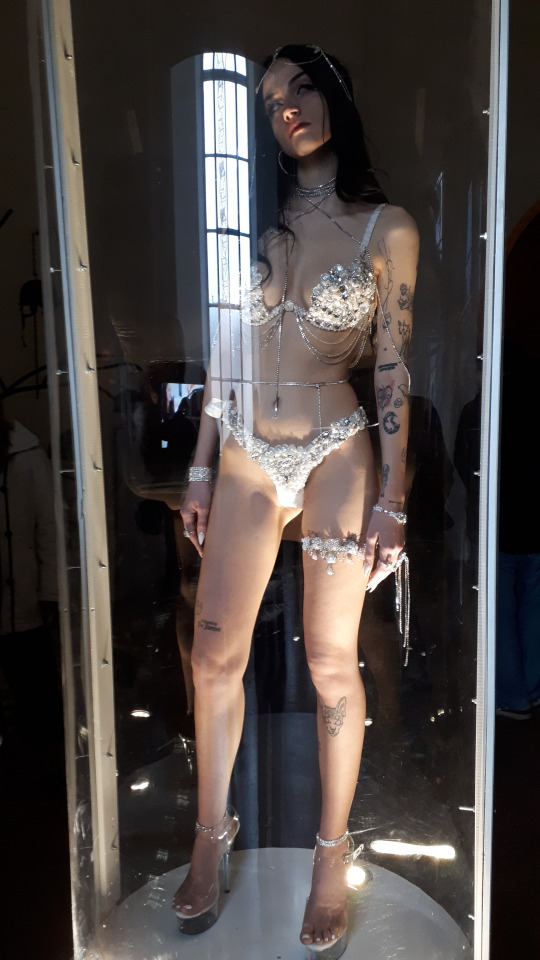
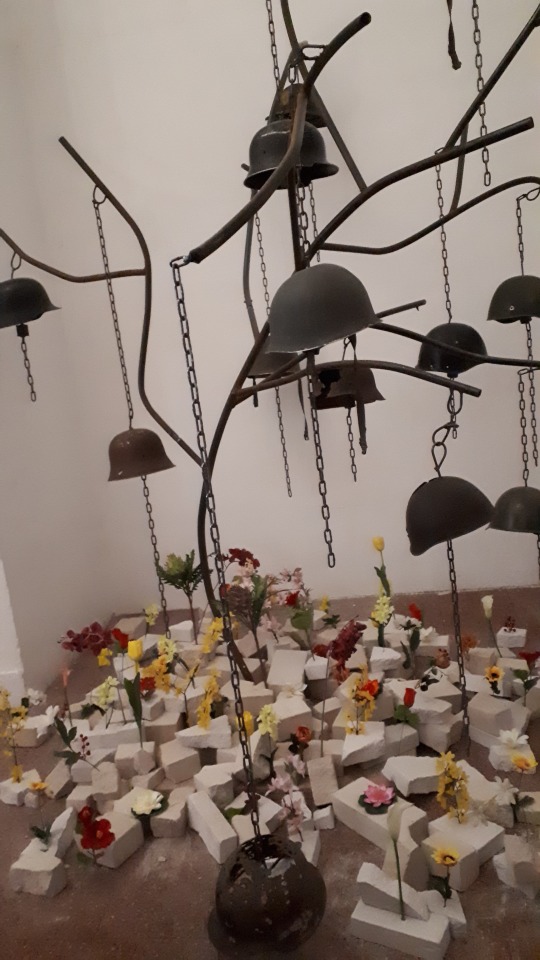

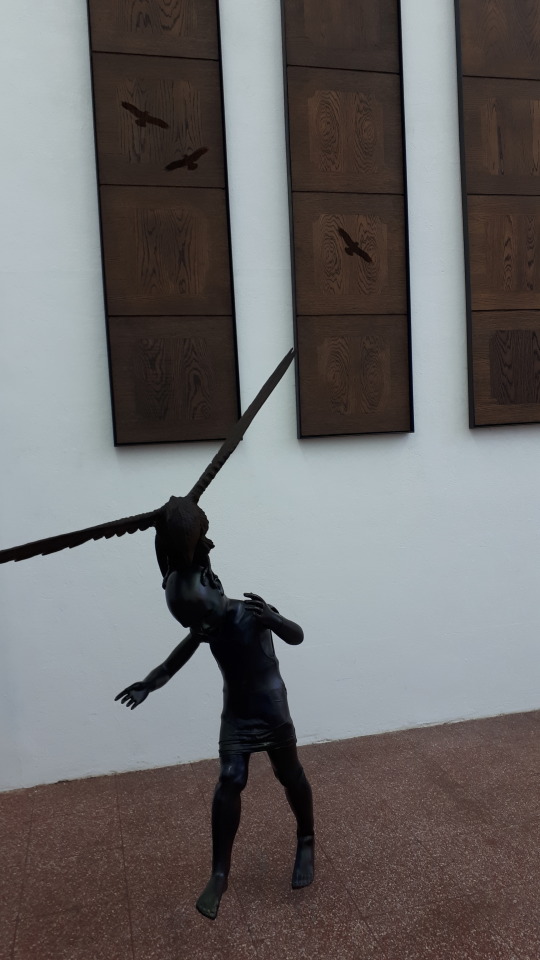

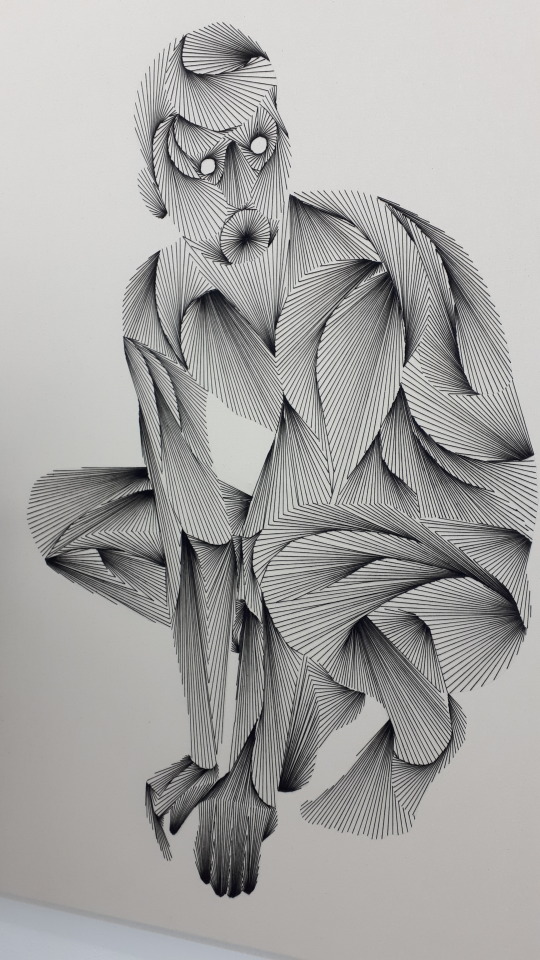

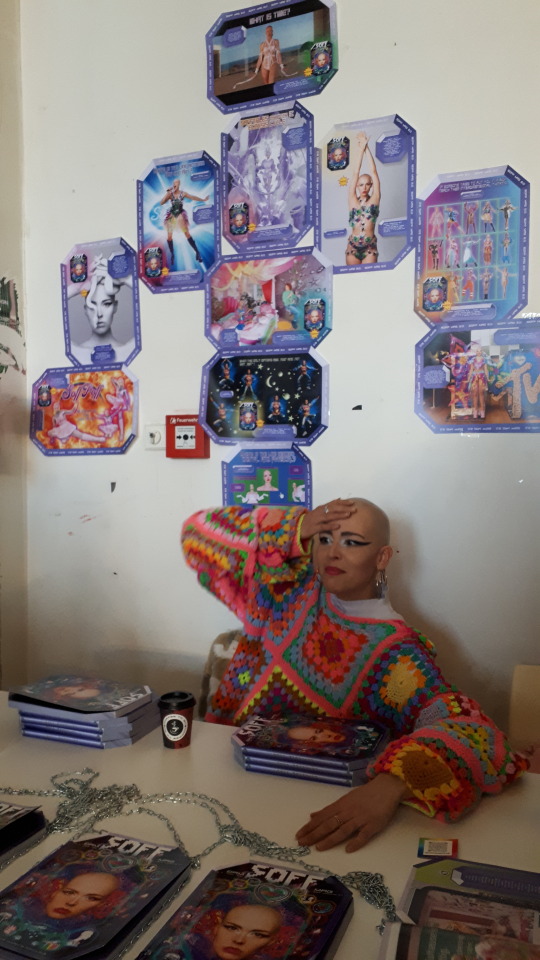
Eindrücke vom Rundgang in der Kunstakademie Düsseldorf am 11.02.2023 (Angaben zu den Kunstwerken s.u./ Fotos in absteigender Reihenfolge):
1. De profundis von Elija Wagmann
2. Cosima Ramirez steht in ihrer Installation Woman. Materialien: Plexiglas, Holz, Farbe, Körper, Perlen, Licht
3. Tree of Life / Please don’t finger me von Ko Hyeon Ung, Variable Maße, Stahlhelme von Weltkriegen, Blumen der aktuellen Kriegsländer - Gedenkinstallation für die Opfer der Kriege. Über Blumen auf zerborstenen Steinen schweben angeschossene Stahlhelme.
4. Enya Burger: Drill Baby Drill; Aluminiumguss, Installation
5. Lukas Stöver: Eagle and child, Eiche gebeizt, Stahlrahmen, Autolack, Polyvinylchlorid, Baumwollhemd, Wandarbeit, gerahmt,
6. Amelie Uliczka: Die rote Blume, Acryl auf Pappe, Tapete
7. Sven Dirkmann: o.T.
8. Sonja Heim: Wir müssen gar nichts
[>hier ein Kurzvideo der Installation]
9. Kathi Irmen: Untitled
10. Sophie Ramirez als SoffPoff
Mehr Infos zum Rundgang
0 notes
Photo

Rundgang Kunstakademie Düsseldorf 8.-12. Februar 2023 Täglich 10 - 20 Uhr Foto 1: #monaschulzek @mona_schulzek Foto 2: #MioZajac @mio.zajac Foto 3: Protest #rundgang #rundgang2023 #kunstakademiedüsseldorf #kunstakademie #students #düsseldorf #contemporaryart #highlights #kunstindüsseldorf #kunstausstellung #düsseldorf #knstkdmdssldrf #rundgangkunstakademiedüsseldorf2023#artoftheday #artistsoninstagram #modernekunst #artacademy #artactivism #contemporaryart #kunstliebe #kunstliebhaber #künstlerleben #sculptures @knstkdmdssldrf (hier: Kunstakademie Düsseldorf) https://www.instagram.com/p/CojZy4io_IR/?igshid=NGJjMDIxMWI=
#monaschulzek#miozajac#rundgang#rundgang2023#kunstakademiedüsseldorf#kunstakademie#students#düsseldorf#contemporaryart#highlights#kunstindüsseldorf#kunstausstellung#knstkdmdssldrf#rundgangkunstakademiedüsseldorf2023#artoftheday#artistsoninstagram#modernekunst#artacademy#artactivism#kunstliebe#kunstliebhaber#künstlerleben#sculptures
1 note
·
View note
Text
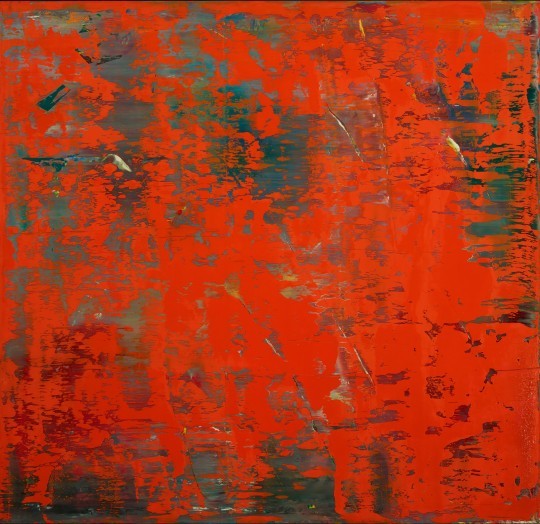
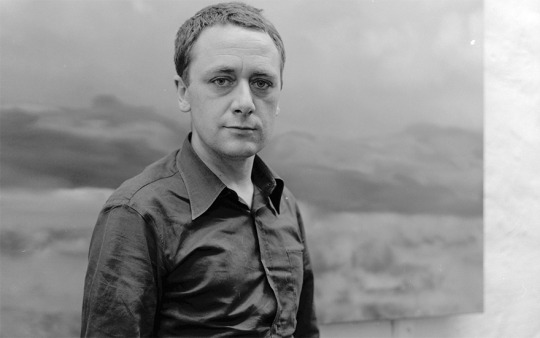
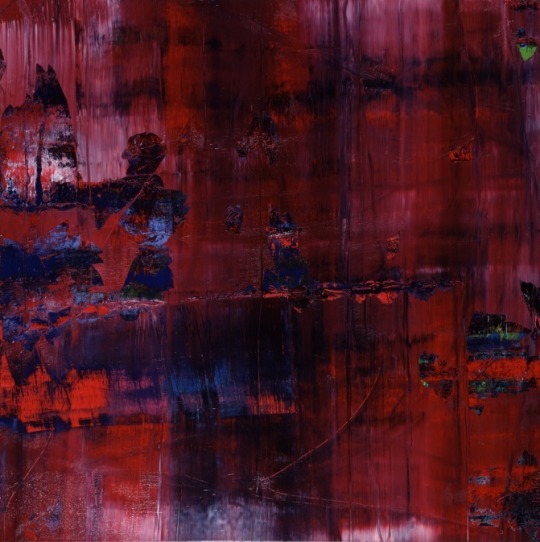

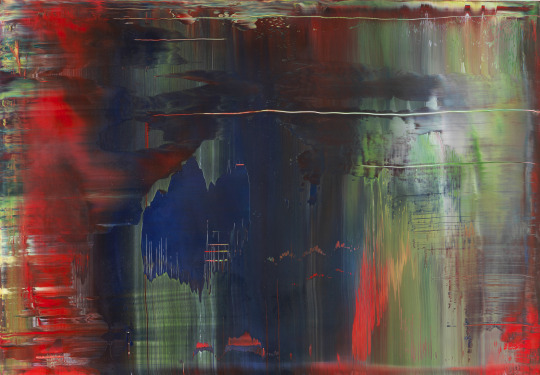



Gerhard Richter was born in 1932 in Dresden, Germany, during the rise of the National Socialist German Workers' Party, or the Nazi Third Reich. Notably, some of Richter's relatives were directly involved in the Nazi movement, namely his father, a schoolteacher, and an uncle. Richter's mother, the daughter of a concert pianist, encouraged her son's early talent for draftsmanship. In 1948, at the age of 16, Richter quit his formal education and took up an apprenticeship as a set painter for the theater. The wake of war proved traumatic for Richter: two of his uncles had been killed in action, and his father had lost his employment. This family turmoil, coupled with the artist's early artistic training under postwar communist-driven ideology, eventually led Richter to seek his creative inspiration in nature over any political or religious affairs or philosophies.
Beginning in 1951, Richter studied at the Kunstakademie, Dresden, where he painted murals and political banners commissioned by state-owned businesses. During this time, the East German communist regime imposed a Social Realist style on all practicing artists; this policy effectively turned art to the service of political propaganda. In keeping with this development, the government banned exhibitions of American Pop art and Fluxus. These circumstances severely limited Richter's fledgling artistic style, as he was instructed to paint only landscapes in a manner heavily informed by pastoral romanticism.
Richter married Marianne Eufinger in 1957, and the couple celebrated the birth of a daughter, Betty, in 1966. Two years later, during a visit to West Germany in 1959, Richter discovered the work of contemporary artists Jackson Pollock and Lucio Fontana. Pollock's uninhibited splashes of color across canvas had a profound impact on Richter, provoking him to reflect on his own artistic ideology. Indeed, Richter began to question how a realist style did not seem to capture the energy, sense of truth, and spirit of artistic liberation that he observed in the abstract work of his American and European contemporaries. Supposedly "realistic", his work seemed to fail to reflect the underlying, tumultuous nature of reality itself.
In 1961, just prior to the government's official completion of the Berlin Wall, Richter moved to Düsseldorf. Once again enrolling at the local Kunstakademie, Richter intended to work in a more uninhibited, avant-garde manner; in the process of rethinking his approach to art making, he purposely destroyed many of his early paintings from the 1950s and the 1960s.
Continue reading https://www.theartstory.org/artist/richter-gerhard/
60 notes
·
View notes
Text
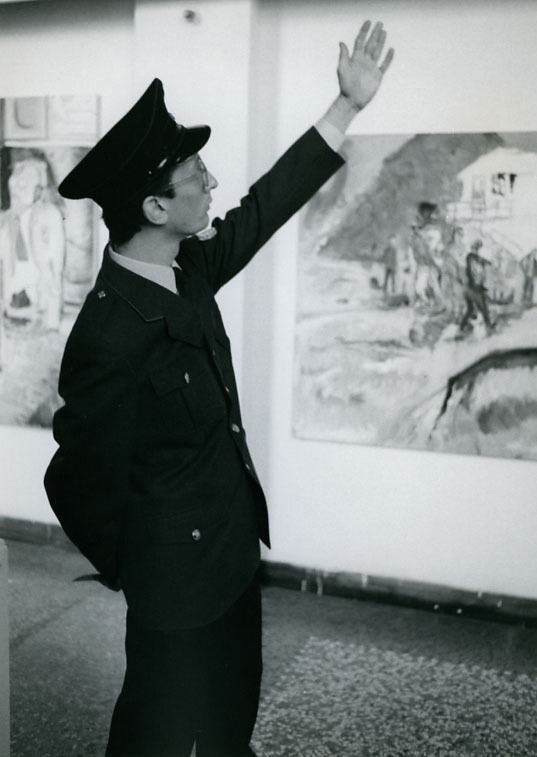
Christian Phillip mueller, KLEINER FÜHRER DURCH DIE EHEMALIGE KURFÜRSTLICHE GEMÄLDEGALERIE, 5– 8 February 1986 , Rundgang, Kunstakademie Düsseldorf, Elements of the Performance : Two boards of compressed wood, labeled, Two rolls of paper, hand-painted, Two pieces of Plexiglas, labeled, Two display stands made from scrap wood, 1000 leaflets (ten pages each)
3 notes
·
View notes
Text
BASIC FORMS > BERND & HILLA BECHER
*CLÁSSICOS

Os alemães Bernd (Bernhard,1931-2017) e Hilla Becher (1934-2015) foram fotógrafos que juntos produziram uma extensa documentação tipológica de estruturas industriais na Alemanha e em outros países da Europa e nos Estados Unidos. Suas imagens têm um caráter que chamamos de "straight" ou seja sem firulas ou maneirismos, observando sempre um plano direto, em preto e branco, que serviram como estudos do que eles chamaram de "Escultura Anônima", um registro das relíquias arquitetônicas em extinção, como minas de carvão, siderúrgicas, caixas de água, silos de grãos e tanques de gás entre outras construções.
A importância da dupla pode ser avaliada pela Bienal de Veneza de 1990 que concedeu o Leão de Ouro da Escultura para eles. No pavilhão alemão daquele ano, foram expostas as séries de instalações arquitetônicas, cujo o mainstream da pesquisa da arquitetura não dava muita importância. Esculturas, no entanto, os Bechers nunca criaram. Eles simplesmente fotografaram as estruturas industriais abandonadas. Sem eles, realmente teriam continuado anônimas, no paradoxo do título de suas séries. Entre os inúmeros livros publicados, encontramos a reedição de seu Basic Forms ( Prestel London, 2020), originalmente publicado em 2014 pela Schirmer/Mosel Verlag Munich como Basic Forms- of Industrial Buildings, uma síntese de 40 anos de trabalho pelo mundo em busca da representação de tipologias e topografias peculiares.

Hilla e Bernd conheceram-se quando estudavam pintura na Kunstakademie Düsseldorf (Academia de Belas Artes de Dusseldorf) instalada na cidade dividida pelo rio Reno, com a Altstadt (Cidade Antiga) na margem oriental e as modernas áreas comerciais. Seguiram um romance que os levou a uma carreira colaborativa. Eles contam: “Tomamos consciência de que estes edifícios eram uma espécie de arquitetura nômade que tinha uma vida comparativamente curta – talvez 100 anos, muitas vezes menos, e depois desaparecem. Parecia importante mantê-los de alguma forma e a fotografia parecia a forma mais adequada.” Seus métodos e técnicas de trabalho influenciaram uma geração de fotógrafos hoje conhecida como Escola de Düsseldorf, que inclui nada menos que os consagrados alemães Andreas Gursky, Thomas Struth, Thomas Ruff e Candida Höfer. Suas obras estão incluídas nas coleções do Art Institute of Chicago, do Museum of Modern Art de Nova York, da National Gallery of Art de Washington, D.C. e da Tate Gallery de Londres, entre inúmeras importantes instituições do mundo.
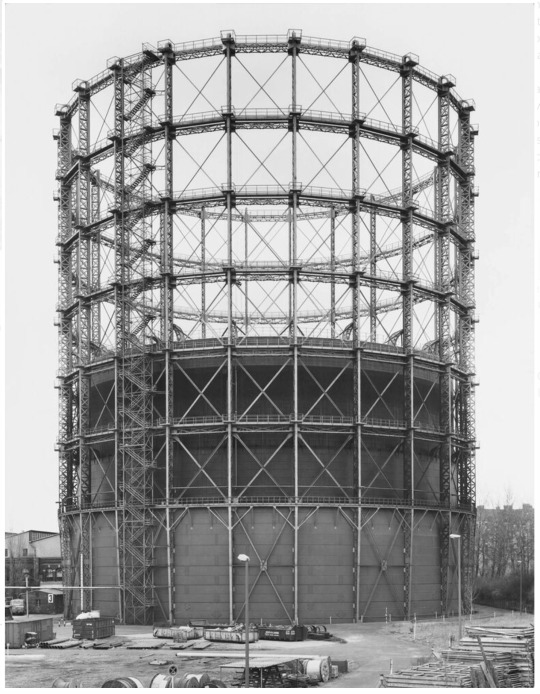
O inventário fotogr��fico destas estruturas industriais é sem dúvida uma das realizações mais interessantes e significativas da produção fotográfica dos séculos XX e XXI. Apoiando-se na ideia da tipologia e uma visão comparativa, o casal entrou sistematicamente no assunto revelando constantes variações destes complexos que nunca eram chamados de "arquitetônicos" muito menos interessantes para a arte estabelecida à época do início desta produção ( anos 1960 aos 2000) construindo uma impressionante coleção de séries tipológicas, criando assim uma inestimável enciclopédia fotográfica sobre a cultura industrial de uma época final que combina a taxonomia científica com o empirismo estético. O levantamento mostrado em Basic Forms, segundo seus editores, ilustra ambos: as "formas básicas" da arquitetura industrial anônima e o conceito estético da fotografia de Bernd e Hilla Becher.
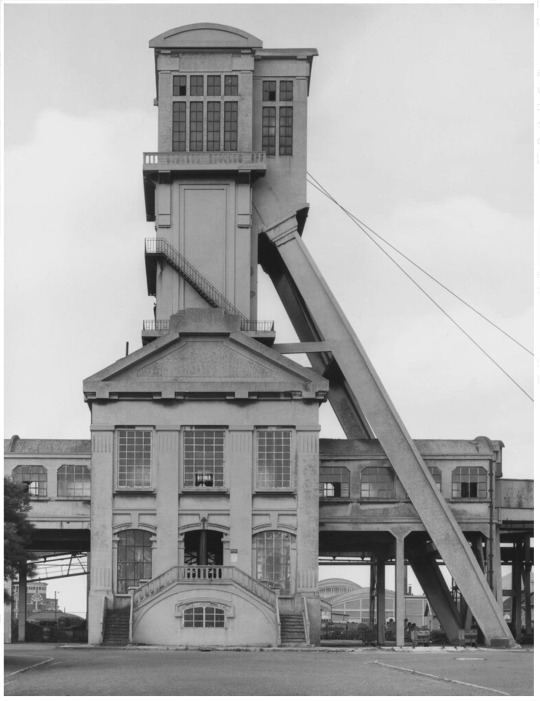
Basic Forms contém um texto instigante do belga Thierry de Duve, professor visitante de Arte Moderna e Teoria da Arte Contemporânea, nas universidades de Lille III e Sorbonne, ambas na França, além de crítico de arte e curador, como do Pavilhão belga Na Bienal de Veneza de 2003, e autor de livros importantes como "Pictorial Nominalism; On Marcel Duchamp's Passage from Painting to the Readymade (University of Minnesota Press, 1991),"Bernd and Hilla Becher" (Schirmer Art Books, 1999), entre dezenas de outros, publicados na Inglaterra, Alemanha e Estados Unidos.

As fotografias são feitas com uma câmera que utiliza negativos no formato grande 20X25cm, no início da manhã, em dias nublados, para eliminar sombras e distribuir a luz de maneira uniforme. O tema é centrado e enquadrado frontalmente, com suas linhas paralelas dispostas em um plano o mais próximo possível de uma elevação arquitetônica. Nenhum ser humano e nenhuma nuvem ou pássaro no céu interferem na rigidez. A imagem não transmite nenhum humor, nem o menor toque de fantasia que perturbe sua neutralidade ascética. Raramente a recusa do Fotografte ( o fotografado) subjetivo é feita e a Sachlichkeit (Objetividade) da lente da câmera foi perseguida de forma tão sistemática, reflete Thierry de Duve.
Considerando a possibilidade de uma fotografia ser totalmente desprovida de estilo, a dos Bechers poderia ser entendida deste modo. Um trabalho que segundo a crítica pertence à tradição arquivística da fotografia na qual o francês Eugène Atget (1857-1927) e o alemão August Sander (1876-1964) – fotógrafos que fizeram questão de não serem artistas e se destacaram, embora hoje sejam considerados como tais. "As fotos de Bernd e Hilla poderiam ser descritas como puros documentos se não houvesse algo que nos impedisse de colocá-las, sem mais delongas, na categoria da foto documental." diz Duve.
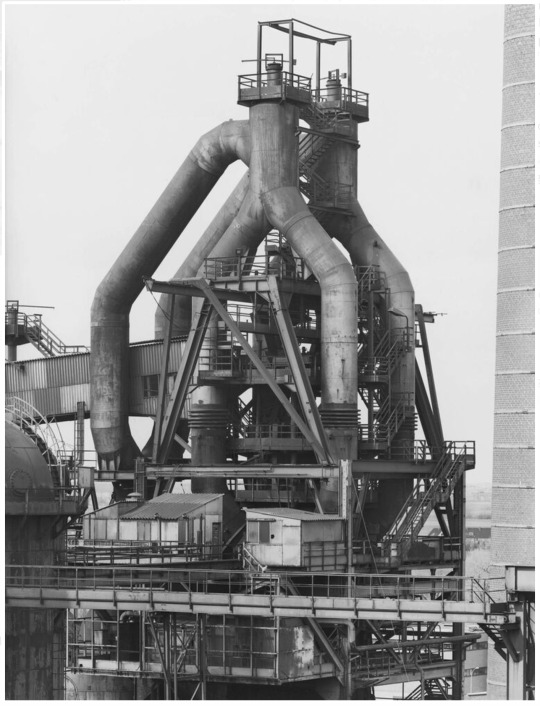
O crítico em seu texto explora o ideal da imagem conceitual e recorre a um provérbio chinês apócrifo: “Quando o homem sábio aponta para a lua, o tolo olha para o seu dedo”. No caso dos fotógrafos, o tolo olha para a fotografia e o sábio para o que esta mostra. "O tolo pergunta por que essas imagens são “arte”, enquanto o sábio vê nelas um testemunho indiscutível do mundo real. "No entanto, o mais sábio dos homens sábios é um tolo, porque para saber que o dedo está apontando para a lua, ele deve primeiro olhar para o dedo. É um dos paradoxos da fotografia que um elemento giratório balance incessantemente o espectador de uma representação para um uso estético da imagem e vice-versa.
Mesmo que os Bechers tenham profundo conhecimento da sua profissão é difícil chamá-los de fotógrafos. No mundo da arte onde os seus trabalhos circulam, onde é visto e vendido, as pessoas os descrevem como artistas, acrescentando ocasionalmente “que fazem uso da fotografia”. Para de Duve, "a obra do casal abriga uma emoção contida, melancolia sem nostalgia, dor histórica, guerras de classes travadas ou sustentadas, admiração pela arte multifacetada do engenheiro, lucidez, dignidade, respeito pelas coisas, humildade e auto-anulação que só tenho uma coisa a dizer sobre isso : esta é uma arte genuinamente grande, daquelas que não tem necessidade de ter o seu nome protegido ao ser colocada num museu, porque já pertence à nossa memória coletiva."

As fotografias, nas paredes de um museu ou galeria são “arte”. Inseridas nas páginas deste livro fazem fronteira com o documento etnográfico, mas em ambos os casos, são fotografias e não pinturas ou gravuras. Mostram aquilo que a luz gravou em sua superfície. O filósofo americano Charles Sanders Peirce (1839-1914) um dos pioneiros da Semiótica - classificou a fotografia como um sinal por conexão física que, como fumaça ou pegadas na neve, é ao mesmo tempo um índice do objeto ao qual se refere e um indicador apontando para ele. É a existência real dos seus referentes, porque como eles estão relacionados por um nexo causal que pode operar em contiguidade espaço-temporal ou em contiguidade quebrada e assemelham-se aos seus referentes. Aqueles que figuram na classificação de Peirce tanto como ícones quanto como índices. Esse é o caso da fotografia. Faça uma fotografia de uma torre de água, no sentido de representá-la e mostre-a, diz o crítico. Ela é a representação de como faria um desenho com uma ligeira diferença que é a causalidade fotoquímica.
O projeto de quase uma vida de Bernd e Hilla Becher ao documentar a paisagem industrial do nosso tempo assegura sua posição no cânone dos fotógrafos do pós-guerra. Ao reunirem ao mesmo tempo arte conceitual, estudo tipológico e documentação topológica, certamente nos aproxima da grande mostra New Topographics Photographs of a Man-Altered Landscape, no museu de fotografia da George Eastman House, em Rochester, Nova York, entre outubro de 1975 e fevereiro de 1976, com curadoria de William Jenkins, na qual os dois tiveram importante papel na ruptura da história da fotografia e as representações não tradicionais da paisagem. A visão romântica e transcendente deu lugar às indústrias austeras, a expansão suburbana e cenas cotidianas, elaboradas por fotógrafos como eles e seus companheiros da mostra original: os americanos Robert Adams, Lewis Baltz (1945-2014), Joe Deal (1947-2010) , Frank Gohlke, Nicholas Nixon, John Schott, Stephen Shore e Henry Wessel (1942-2018).
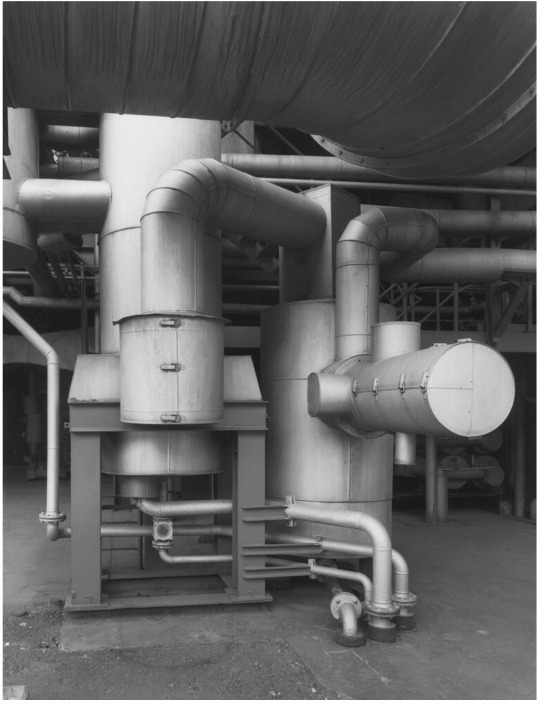
Sintetizadas a um estado essencialmente topográfico e transmitindo quantidades substanciais de informação visual, mas evitando quase inteiramente os aspectos de beleza tradicional, emoção e opinião são características que resumem estes trabalhos. Entretanto, ao olhar as formas capturadas pelos Bechers fica difícil não realizar a beleza (melancólica) e ímpar contida- principalmente pelo seu caráter tipológico nelas representadas- ao incorporaram igualmente uma precisão técnica excepcional, expressa nos negativos de grande formato e filmes lentos.
O livro Bernd & Hilla Becher, Life and Work (MIT Press, 2006) de Susanne Lange, historiadora da fotografia, uma bem documentada biografia, discute as dimensões funcionalistas e estéticas do tema do casal, em especial a tipologização na obra deles, que considera uma reminiscência dos esquemas classificatórios dos naturalistas do século XIX e o estilo de construção industrial anônimo preferido pelos arquitetos alemães. Ela argumenta que os tipos de edifícios industriais impõem-se à nossa consciência como a catedral o fez na Idade Média, e que as fotografias do casal - que à primeira vista parecem registar apenas uma paisagem em extinção - servem para examinar esta configuração das nossas percepções.
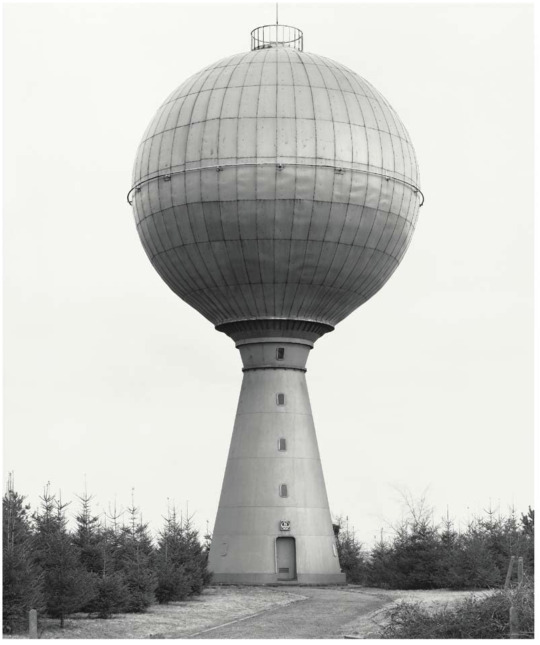
Em 1922, se pergunta Thierry de Duve, quando o arquiteto suíço Le Corbusier (Charles-Edouard Jeanneret-Gris,1887-1965) procurava o caminho para uma nova arquitetura, ou antes, em 1919 quando o arquiteto alemão Walter Gropius (1883-1969) fundou a Bauhaus, quais eram os seus referentes, que modelos citavam para uma arquitetura ainda por nascer? Ele responde: "O mais conhecido foi tirado da América industrial e celebrado tanto pelo primeiro quanto o segundo: o silo de grãos. Se você adicionar armazéns, fábricas, transatlânticos, pontes, torres de água, torres de resfriamento e gasômetros, logo temos uma tipologia de edifícios técnicos inteira, composta de "edifícios industriais", "construções" e “estruturas”. Como devemos chamar toda essa arquitetura anônima sem consciência de si mesmo?"
As imagens de Bernd e Hilla Becher estão entre essas obras, diz Duve. Não desconsidera uma modernidade que, na arquitetura como em outros campos onde a arte e a política se encontram, começou por celebrar um futuro melhor e termina ou esgota-se no desencanto do pós-modernismo, completa o pensador. Mas leva-nos de volta ao lugar onde começou a utopia da arquitetura moderna e onde, apesar de ter falhado em Sarcelles ou Brasília, acrescento, a Cidade do Amanhã ainda guarda a recordação da utopia.
Imagens © Bernd e Hilla Becher. Texto © Juan Esteves
Infos básicas:
Editora Prestel, Londres
Design: Schirmer/Mosel
Impressão EBS, Verona, Itália
Papel Gardamatt
6 notes
·
View notes
Text

Christian Albrecht von Benzon (July 11, 1816 - 1849) was a Danish history and genre painter who studied at the Royal Academy in Copenhagen without graduating and instead was sent to Düsseldorf where he did somewhat better. He then tried his luck in France but ended up in debtor's prison where he died of cholera, aged 33.
He did a portrait painting of Hans Christian Andersen while still at the Academy (1835), and the fairy tale poet hated it. Nonetheless it was used as a frontispiece illustration for Andersen's Collected Works and here it is!
#art#danish artist#danish painter#danish royal academy of fine arts#1830s#hans christian andersen#christian albrecht von benzon#kunstakademie düsseldorf#portrait painting#frontispiece#book illustration#history painting#genre painting#debtor's prison#cholera
2 notes
·
View notes
Photo

THE FRIDAY PIC is “Comparative Juxtaposition, Nine Objects, Each with a Different Function” (1961–72), from the stunning survey of Bernd and Hilla Becher at the Metropolitan Museum of Art in New York. I just reviewed it for the New York Times, making the argument that the Bechers’ orderly inventories of industrial life actually point to the fractures of an industrial order that was fading in their day. (Read on for the full text of my Times piece, pasted at the end of this post.)
Newspaper writing didn’t give me room to touch on something else that struck me about the Bechers’ work. I believe, as is often claimed, that it echoes the great earlier “inventory” compiled by the Bechers’ predecessor August Sander in his "People of the 20th Century,” mostly worked on between the two world wars. But that echo doesn’t come from a shared interest in accurate inventories and orderings, which is the usual claim about these two bodies of work, but from the way both Sander and the Bechers reveal failures in ordering structures.
Just as the Bechers’ orderly photos wake us up to industrial order at the moment of its collapse, so Sander was pretending to catalog the German people when the smart thinkers of his era (e.g., John Dewey) were calling the whole idea of a “people” into question. As I argued some years ago, Sander’s supposed catalog of Germans quite deliberately fails to be a true catalog: He happily used the same friend of his to play several roles in his supposed inventory of distinct types; the categories he sorts people into can be arbitrary to the point of absurdity; his photos can be entirely unrevealing as to who their sitters are and what they do. Sander’s project, I once claimed, “implies a full repudiation of the kind of social sorting that led to the Nazis. It doesn’t merely ‘humanize’ that sorting, as the standard Sander cliche proclaims.” I’d say that the Bechers’ photos, following on from Sander’s example, imply a similar resistance to the industrial order that they’ve often been thought to embody.
(Image courtesty Estate Bernd & Hilla Becher, represented by Max Becher; via The Metropolitan Museum of Art)
And here’s my full Times story on the Bechers:
Photography’s Delightful Obsessives
The Met surveys Bernd and Hilla Becher, who turned Machine Age monuments into alluring collectibles.
By Blake Gopnik
July 28, 2022
One wall is gridded up with photos of industrial cooling towers, portrayed in wildly detailed black-and-white.
Another gives us 30 different views of blast furnaces, at plants across Western Europe and the United States. You can just about make out each bolt in their twisting pipework.
An entire gallery surveys the vast Concordia coal plant at Oberhausen, in Germany: Teeming photos present its gas-storage tanks, its “lean gas generator,” its “quenching tower,” its “coke pushers.”
These and something like another 450 images fill “Bernd & Hilla Becher,” a fascinating, frankly gorgeous show at the Metropolitan Museum of Art. The Met’s curator of photography, Jeff Rosenheim, has organized a thorough retrospective for the Bechers, a German couple who made some of the most influential art photos of the last half century. Bernd (1931-2007) and Hilla (1934-2015) mentored generations of students at Düsseldorf’s great Kunstakademie, whose alumni include major photographic artists like Andreas Gursky and Candida Höfer.
But for all the heft of the heavy industry on view in the Met show — it’s easy to imagine the stink and smoke and racket that pressed in on the Bechers as they worked — you come away with an overall impression of lightness, of delightful order, even sometimes of gentle comedy.
Wall after wall of gridded grays soothe the eye and calm the soul, like the orderly, light-filled abstractions of Agnes Martin or Sol LeWitt. The very fact of gathering 16 different water towers, from both sides of the Atlantic, onto a single museum wall helps to domesticate them, removing their industrial angst and original functions and turning them into something like curios, or collectibles. A catalog essay refers to the Bechers’ “rigorous documentation of thousands of industrial structures,” which is right — but it’s the rigor of a trainspotter, not an engineer. Despite their concrete grandeur, the assorted water towers come off as faintly ridiculous: Whether you’re collecting cookie jars or vintage wines — or shots of water towers — it’s as much about our human instinct to amass and organize as it is about the actual things you collect.
Consider the 32 Campbell’s Soups (1962) that launched Andy Warhol’s Pop career, which are a vital precedent for the Bechers’ ordered seriality. You can read the Soups as a critical portrayal of American consumerism, but a catalog of canned soups also reads as a quiet joke, at least when it’s presented for the sake of art, not shopping. Ditto, I think, for the Bechers’ famous “typologies” of industrial buildings, presented without anything like an industrial goal.
Indeed, the one thing you don’t come away with from the Becher show is real knowledge of mechanical engineering, or coal processing, or steel making. In long-ago student days, I cut out and framed a wallful of images from the Bechers’ glorious book of blast-furnace photos. (Their art has always existed as much in their books as in exhibitions.) After living with my furnaces for a decade or so, I can’t say I could have passed a quiz from Smelting 101.
Early coverage referred to the Bechers as “photographer-archaeologists” and the Met’s catalog talks about how they revealed the “functional characteristics of industrial structures.” There are certainly parallels between the preternatural clarity and unmediated “objectivity” of their images and earlier, purely technical and scientific photos meant to teach about the constructions and processes of industry. The Bechers admired such pictures. But however systematic their own project might seem, its goal was art, which means it was always bound to let function and meaning float free.
I think it’s best to imagine that they cast a doubting eye on earlier aspirations to scientific and technical order. After all, the Bechers hit their stride as artists in the 1960s and early ’70s, at just the moment when any aspiring intellectual was reading Thomas Kuhn’s “The Structure of Scientific Revolutions,” which pointed to how the sociology of science (who holds power in labs and who doesn’t) shapes what science tells us. The French philosopher Roland Barthes had killed off the all-powerful author and let the rest of us be the true makers of meaning, even if that left it unstable. European societies were in turmoil as they faced the terrors of the Red Brigades and Baader–Meinhof gang, so brilliantly captured in the streaks and smears of Gerhard Richter, that other German giant of postwar art. The Bechers were working in that world of unsettled and unsettling ideas. By parroting the grammar of technical imagery, without actually achieving any technical goals, their photos seem to loosen technology’s moorings. By collecting water towers the way someone else might collect cookie jars, they cut industry down to size.
Bernd and Hilla Becher at the Ensdorf Mine, Saarland, Germany, in 1979 (artist unknown). Their camera’s lens, facing Hilla, has been raised higher than the film plane that’s facing Bernd, a trick that lets them capture the tops of tall structures.
Bernd and Hilla Becher at the Ensdorf Mine, Saarland, Germany, in 1979 (artist unknown). Their camera’s lens, facing Hilla, has been raised higher than the film plane that’s facing Bernd, a trick that lets them capture the tops of tall structures.Credit...Estate Bernd & Hilla Becher, represented by Max Becher; via The Metropolitan Museum of Art
Bernd and Hilla Becher at the Ensdorf Mine, Saarland, Germany, in 1979 (artist unknown). Their camera’s lens, facing Hilla, has been raised higher than the film plane that’s facing Bernd, a trick that lets them capture the tops of tall structures.
The Bechers weren’t the only artists working that seam. Their era’s conceptualists also played games with science and industry. When John Baldessari had himself photographed throwing three balls into the air so they’d form a straight line, he was simulating experimentation, not aiming for any real experimental result: The repeated throwing and its failure was the point, not the straight line that could never get formed, anyway. When the Bechers’ friend Robert Smithson poured oceans of glue down a hillside, or bulldozed dirt onto a shed until its roof cracked, he was mimicking the moves of heroic construction, not aiming to build anything.
What made the Bechers different from their peers is that they did their mimicking from the inside: They used the language of advanced photographic technology to inhabit the technophilic world they portrayed. Their photos are almost as constructed as any “lean gas generator” they might depict. The just-the-facts-ma’am objectivity of their images is only achieved through serious photographic artifice.
Take the Bechers’ four-square photos of four-square workers’ houses. Several houses are photographed from so close that, standing right in front of them, you’d never take in their entire facades at one glance, as the Bechers do in their images. It takes a wide-angle lens to allow that trick, and only if it’s installed on the kind of technical view camera whose bellows lets lens and film slide in opposite directions. That’s how the Bechers manage to line up our eyes with the top step on a stoop (we see it edge-on) while also catching the home’s gables, high above.
The preternatural level of detail on view, and its glorious range of grays and blacks, require negatives the size of a man’s hand, a tripod as big as a sapling, lens filters and an advanced darkroom technique. And the couple were relying on such labor-intensive technology at just the moment when most of their photographic peers, and millions of average people, had moved on to cameras and film that let them shoot on the fly, in lab-processed color. With the Bechers, the “decisive moment” of 35 mm photography gets replaced by a gray-on-gray stasis that feels as though it could last forever — as though it’s as immovable as the steel girders it depicts.
But in fact those steel girders were more time-bound than the Bechers’ photos let on. “Just as Medieval thinking manifested itself in Gothic cathedrals, our era reveals itself in technological equipment and buildings,” the Bechers once declared, yet the era they revealed wasn’t really the one they were working in. In many cases, their factories and plants and mines were about to close when the Bechers shot them — a few were already abandoned — as Western economies made the switch to services and design and computing. The outdatedness of the Bechers’ technique matches up with their subjects. Both represent a last-gasp moment in the “industrial” revolution, which is why there’s something almost poignant about this show.
One of its most revealing moments involves a film, not a photo, and it’s not even by the power couple. The Bechers’ young son, Max, who has since become a noted artist in his own right, once captured his parents in moving color as they set out to document silos in the American Midwest. Max filmed Bernd and Hilla unloading their heavy-duty equipment, still much as it was in Victorian times, from a classic Volkswagen camper of the 1960s. It was an absurdly underpowered machine, but who could resist its colorful paint job or its mod lines and stylings?
To get the full meaning and impact of the Bechers’ Machine Age black-and-whites, they should really be viewed through the windows of their Information Age orange van.
Bernd & Hilla Becher. Through Nov. 6 at the Metropolitan Museum of Art, 1000 Fifth Avenue, Manhattan, (212) 535-7710; metmuseum.org.
31 notes
·
View notes
Text
DER NEUE KUNSTPALAST DÜSSELDORF
Drei Jahre grundsaniert und jetzt ist er fertig!
Hinter den Kulissen, den Ausstellungsräumen und den schönen Innenhof des nördlichen Flügels des Ehrenhofs mit den markanten Wasserspeienden großen Brunnen.
Und das wird gefeiert! Mit einem Palast-Fest vom 21. November bis zum 26. November diesen Jahres.
Mit freien Eintritt für alle Düsseldorfer und einen abwechslungsreichen Rahmenprogramm. Für…
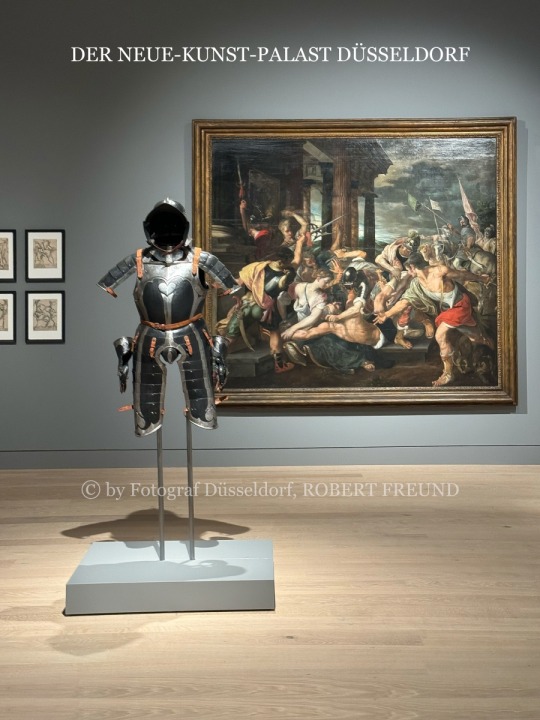
View On WordPress
#art#art books#derneuekunstpalastduesseldorf#Dusseldorf#Ehrenhof#Eröffnung Kunst-palast#Eröffnung neue kunstpalast#fotografie-düsseldorf#Fotografie-Freund#Kunst#kunst museum#Kunstakademie#Kunstpalast#kunstpalastdüsseldorf#nerforum#neue Kunst palast#neuekunstpalast#Rhein#Robert Freund#ständige sammlung
0 notes
Photo

THE TEACHER
joseph beuys mit studierdenden im 5ten ringgespräch
staatliche kunstakademie-düsseldorf, wintersemester 1967-68
photo: ute klophaus
2 notes
·
View notes
Photo

👇Clic imagen: ver completa👇 "MUJER JOVEN CON SU BORDADO" | Pintor alemán: CARL MARIA SEYPPEL | Periodo: 1847-1913 | Óleo sobre lienzo | Pintor de género y retratista, caricaturista y escritor alemán, con sede en Düsseldorf. Ingresó en la Kunstakademie Düsseldorf ya a los 14 años, por mediación de Hermann Wisliceno. Sus profesores allí fueron Andreas Müller en fundamentos e historia del arte, Carl Müller en la sala de antigüedades y Rudolf Wiegmann en la clase de construcción. En noviembre de 1866, pasó a la clase de composición encabezada por Karl Ferdinand Sohn. La pintura Junger Italiener (Joven italiano), creada en 1867 en la clase magistral, se considera su primera obra independiente. Después de la muerte de Sohn, Seyppel continuó sus estudios con Julius Roeting y Eduard Bendemann. Su exposición a la pintura de la Edad de Oro holandesa le proporcionó una técnica completa, así como un fino sentido del tono. En 1870, trabajó por un corto tiempo en el estudio de Ludwig Knaus. Después de una asignación durante la guerra franco-prusiana de 1870/71 como enfermera en hospitales cerca de Trier y Metz, realizó viajes de estudio al Rin y al Mosela, a Westfalia y la Alta Baviera, a la Selva Negra, Inglaterra y los Países Bajos. Las obras de Seyppel se exhibieron regularmente en el país y en el extranjero. Seyppel estuvo activo en Düsseldorf durante toda su vida. Fue miembro de la asociación Malkasten y su presidente desde 1998. También fue miembro de la asociación de artistas académicos Orient y participó en la junta directiva de la Sociedad Histórica de Düsseldorf. Seyppel pintó paisajes y también retratos, especialmente los de otros pintores de Düsseldorf, pero prefería las escenas humorísticas de la vida popular. Fuente: https://en.m.wikipedia.org/wiki/Carl_Maria_Seyppel https://www.instagram.com/p/CfXk0kDsbQY/?igshid=NGJjMDIxMWI=
3 notes
·
View notes